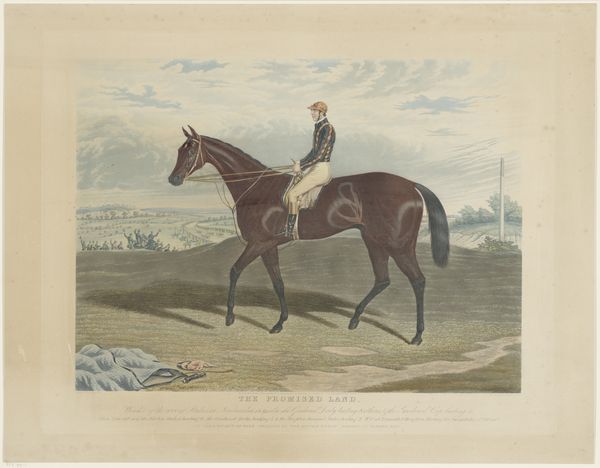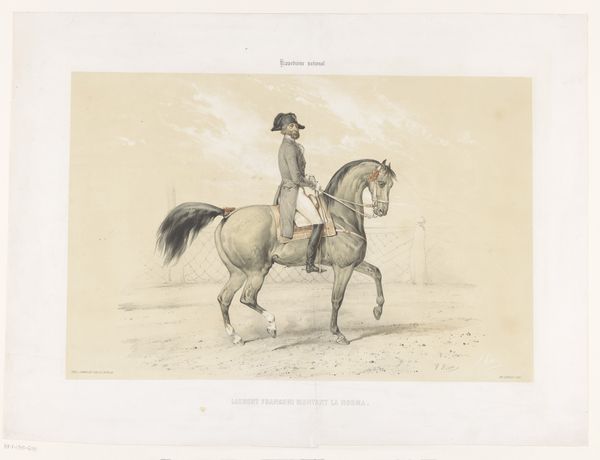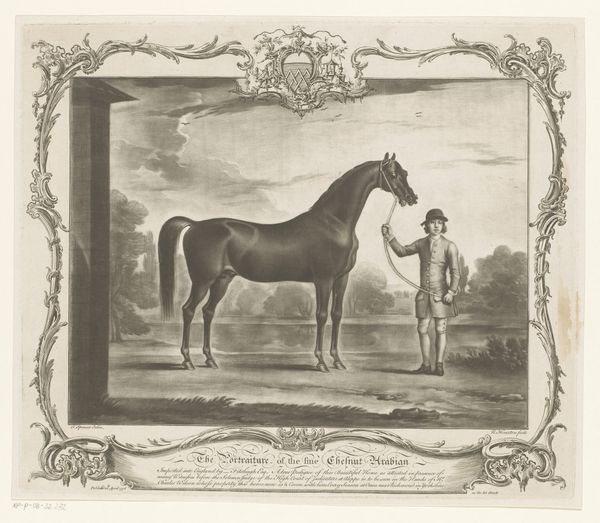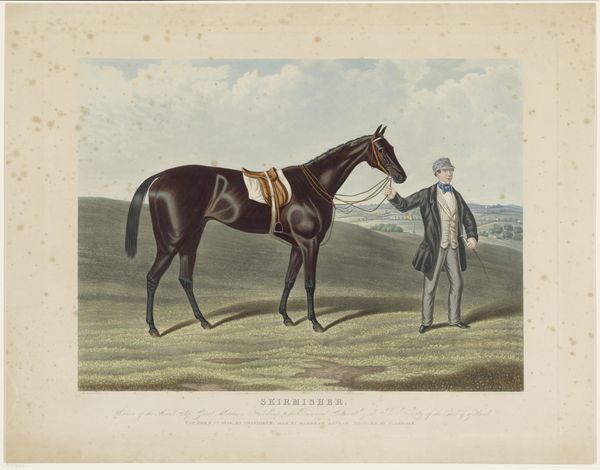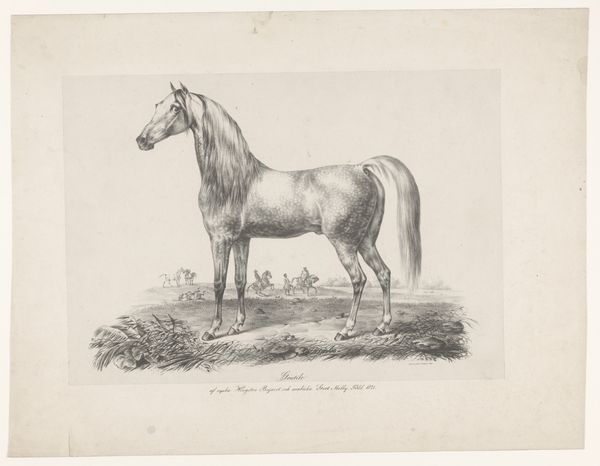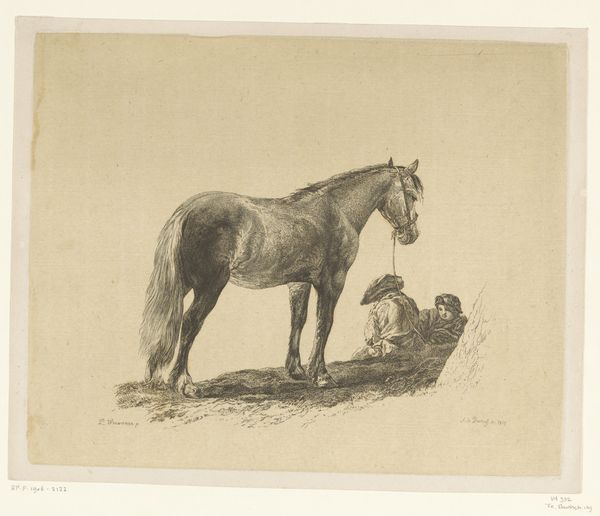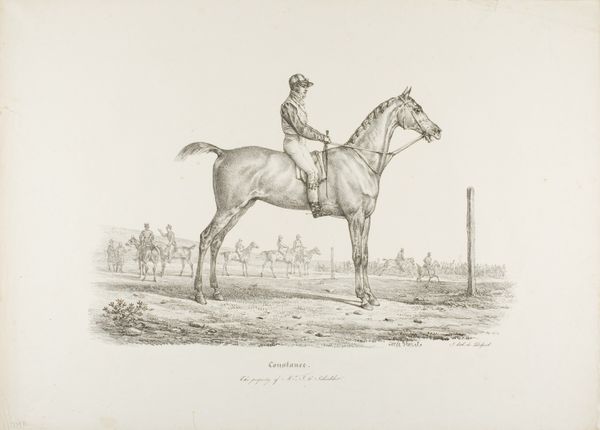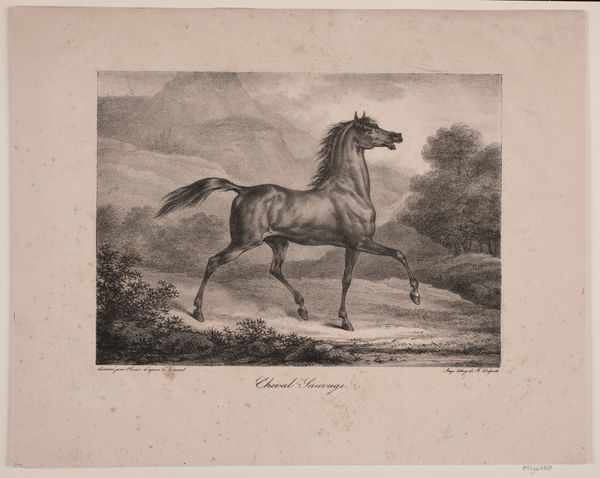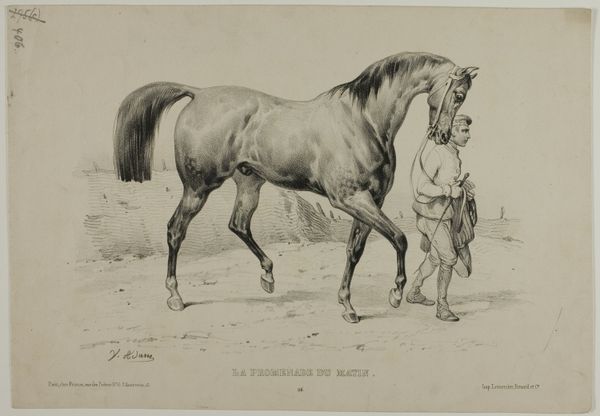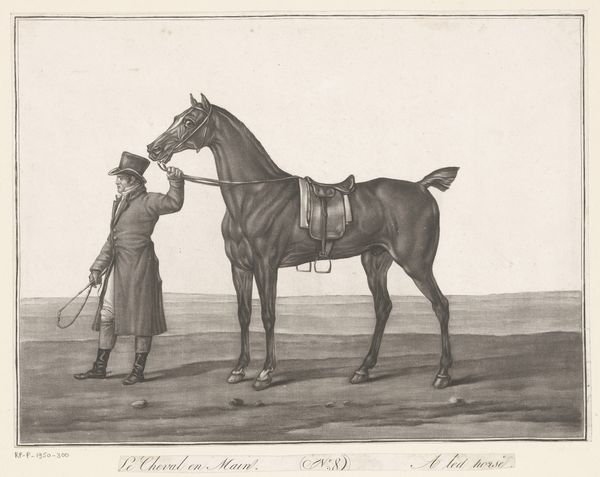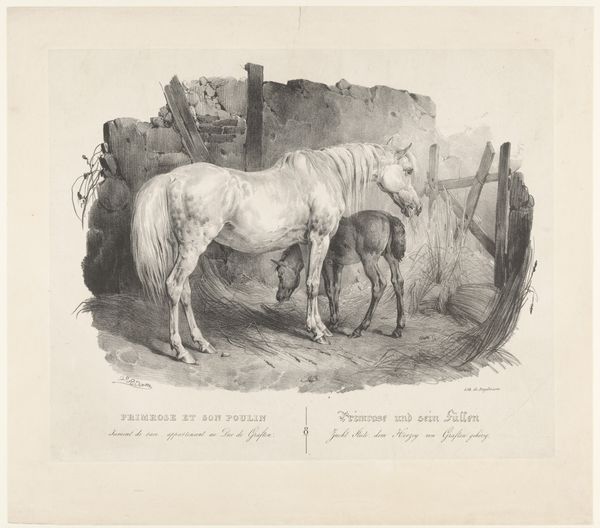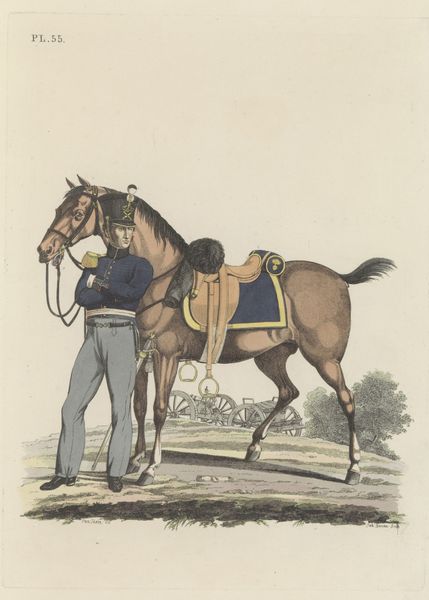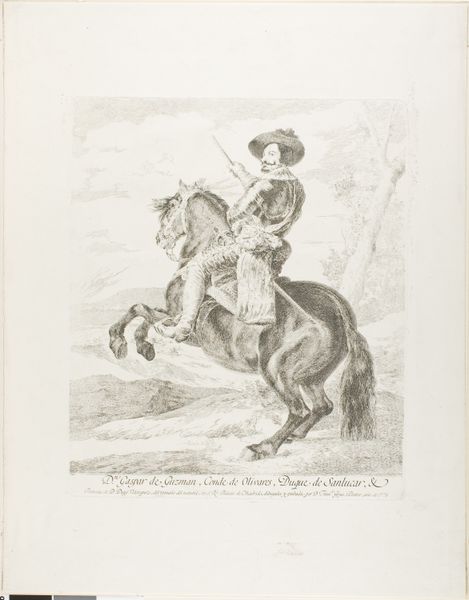
Dimensions: height 420 mm, width 550 mm
Copyright: Rijks Museum: Open Domain
Curator: Oh, look at this! I feel like I've just stumbled into a Victorian-era pastoral scene, all soft light and refined composure. There’s such a poised energy. Editor: Indeed! We’re looking at “Paard van W.L. de Jager uit Wartena,” which translates to “Horse of W.L. de Jager from Wartena," a drawing made with pencil and watercolor on paper sometime between 1851 and 1861, attributed to Abraham Hendrik Winter. What strikes you most about this particular horse portrait, knowing that? Curator: The rabbit, absolutely! It's such a whimsical detail, so unexpected. The way it’s sort of scrambling in the face of all that poised masculinity… it gives the whole scene this lovely, off-kilter quality. The contrast makes it feel alive and unrehearsed. What I think is so interesting is how this imagery could almost seem staged to portray a narrative that only existed amongst the upper class in that time period. Editor: The inclusion of genre painting elements is interesting. These horse portraits became quite popular among wealthy landowners as a means of celebrating agricultural progress and demonstrating their modern breeding techniques. I would even argue that we continue to do that with things like social media even today. Curator: So it’s a kind of status symbol then. Even that refined gentleman holding the horse is symbolic of this class portrayal. It’s strange how that is all embodied in something so simple. Editor: Absolutely. By the mid-19th century, industrialization enabled greater agricultural output, making some landowners very wealthy. Portraits like these weren't simply about the horse, but a visual representation of economic and social standing. Curator: It’s always amazing how a simple portrait can reveal so much. I initially thought it was just beautiful but hearing the full story and what that can all mean for society puts this beautiful moment in a different context. Editor: Exactly. There’s always so much to unpack beyond the surface, isn’t there? And hopefully these subtle cues spark further inquiry!
Comments
No comments
Be the first to comment and join the conversation on the ultimate creative platform.
